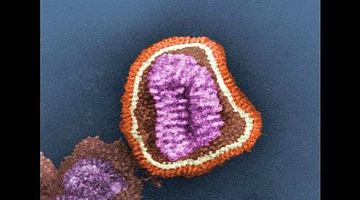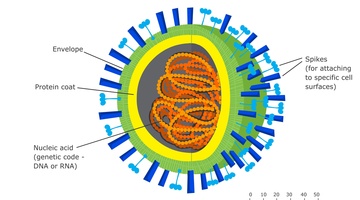Different viruses infect cells in different ways. In this animated video, a virus infects an animal cell through a process called endocytosis. Once in the cell, the virus can replicate itself tens of thousands of times within a few hours.
Transcript
A virus identifies the cell it will infect by a ‘receptor’ or ‘spike’.
A virus can penetrate animal cells in a variety of ways.
Here a virus infects a cell by a process called endocytosis, whereby it uses the host cell membrane to create an outer shell or endosome.
Once in the cell, the virus endosome and envelope merge and release the naked virus.
The naked virus capsid then dissolves, releasing its genetic code.
The genetic sequence begins to replicate.
During replication, the virus will create copies of its receptors that adhere to the outer cell.
The new viruses are released from the host cell, during which they acquire an envelope, which is a modified piece of the host's plasma membrane complete with receptors.
A single virus, when hijacking a host cell, can replicate tens of thousands of times within only a few hours.




